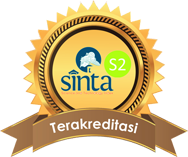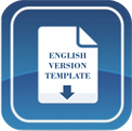APPLICATION OF CONSTRUCTIVISM–BASED STUDENTS’ WORKSHEET TO INCREASE STUDENTS ACTIVITIES AND LEARNING OUTCOMES
DOI:
https://doi.org/10.15575/jtk.v5i1.5607Keywords:
student worksheets, constructivism, learning activities, learning outcomes, organic chemistry IIAbstract
References
Abidin, Y. (2010). Strategi Membaca Teori dan Pembelajarannya. Bandung: Rizki Press.
Amponsah, K. D. & Ochonogor, C. E. (2016). Impact of a Constructivist Approach to Learning On High Achieving Students Comprehension of Electrochemistry concepts. The Eurasia Proceedings of Educational & Social Sciences, 4, 220-231.
Armis. (2013). Penerapan Pendekatan Konstruktivisme dalam Perkuliahan Perencanaan Pengajaran Matematika. Jurnal Edumatica, 3(1), 1-10.
Bhattacharjee, J. (2015). Constructivist Approach to Learning–An Effective Approach of Teaching Learning. International Research Journal of Interdisciplinary & Multidisciplinary Studies, 1(4), 23-28.
Dahlan M.S. (2011). Statistik untuk Kedokteran dan Kesehatan Edisi 3. Jakarta: Salemba Medika.
Febriani, M. (2016). Pemanfaatan Lembar Kerja Mahasiswa untuk Meningkatkan Keaktifan Mahasiswa: Studi Penerapan Lesson Study pada mata kuliah Buku Teks Pelajaran Bahasa Indonesia. Jurnal Pendidikan Bahasa dan Sastra, 16(1), 203-212.
Hartono. (2011). Peningkatan Aktivitas dan Hasil Belajar Mahasiswa Program Studi Biologi Universitas Negeri Makassar (UNM) pada Mata Kuliah Ekologi Hewan Melalui Model Konstruktivisme. Jurnal Bionature, 12(1), 26-34.
Muttakin, M. (2017). Pengembangan Lembar Kerja Mahasiswa (LKM) yang Multikonsep pada Perkuliahan Konsep Kimia Unsur. Jurnal Edukasi Kimia (JEK), 2(1), 54-65.
Nurhasanah, F. (2012). Membangun Keaktifan Mahasiswa pada Proses Pembelajaran Mata Kuliah Perencanaan dan Pengembangan Program Pembelajaran Matematika melalui Pendekatan Konstruktivisme dalam Kegiatan Lesson Study. Jurnal Infinity, 1(1), 62-78.
O’Dwyer, A., & Childs, P. E. (2017). Who Says Organic Chemistry is Difficult? Exploring Perspectives and Perceptions. EURASIA J. Math. Sci. Technol. Educ, 13, 3599-3620.
Orbanić, N. D., Dimec, D. S., & CenciÄ, M. (2016). The Effectiveness of A Constructivist Teaching Model on Students'understanding of Photosynthesis. Journal of Baltic science education, 15(5).
Sasono, M. (2013). Pemanfaatan LKM dan Animasi Java Laboratory sebagai Media Pembelajaran Fisika pada Mata Kuliah Fisika Kuantum untuk Meningkatkan Aktivitas Belajar Mahasiswa Program Studi Pendidikan Fisika FPMIPA IKIP PGRI Madiun. Jurnal Edukasi Matematika dan Sains, 1(1). 36-40.
Setiawan, M.A, Dasna, I.W., & Marfu’ah, S. (2016). Pengaruh Bahan Ajar Multimedia terhadap Hasil Belajar dan Persepsi Mahasiswa pada Mata Kuliah Kimia Organik I. Jurnal Pendidikan, 1(4), 746-751.
Sugiyono. (2010). Statistika untuk Penelitian. Bandung: Alfabeta.
Suryani, M. (2015). Efektivitas Penggunaan Lembar Kerja Mahasiswa (LKM) berbasis Discovery pada Perkuliahan Kalkulus Peubah Banyak 1 (KPB 1) di STKIP PGRI sumatera Barat. Jurnal Lemma, 1 (2).
Tabago, L. C. (2011). Effectiveness of Constructivist Spproach Experiments in Teaching Selected Physics Concepts. IAMURE: International Association of Multidisciplinary Research Journal Science and Technology Section, 2(1), 219-236.
Wirda, M.A, Rosni, Berutu. N., & Rahmad, R. (2018). Pengembangan Lembar Kerja Mahasiswa (LKM) Berbasis Project pada Mata Kuliah Evaluasi Hasil Belajar Geografi TA 2017/2018. Jurnal Geografi. 10(2), 164-175.
Yuliandriati, Y., Susilawati, S., & Rozalinda, R. (2019). Pengembangan Lembar Kerja Peserta Didik Berbasis Problem Based Learning pada Materi Ikatan Kimia Kelas X. JTK (Jurnal Tadris Kimiya), 4(1), 105-120.
Downloads
Published
How to Cite
Issue
Section
Citation Check
License
Authors who publish with this journal agree to the following terms:
- Authors retain copyright and grant the journal right of first publication with the work simultaneously licensed under a Creative Commons Attribution-ShareAlike that allows others to share the work with an acknowledgement of the work's authorship and initial publication in this journal.
- Authors are able to enter into separate, additional contractual arrangements for the non-exclusive distribution of the journal's published version of the work (e.g., post it to an institutional repository or publish it in a book), with an acknowledgement of its initial publication in this journal.
- Authors are permitted and encouraged to post their work online (e.g., in institutional repositories or on their website) prior to and during the submission process, as it can lead to productive exchanges, as well as earlier and greater citation of published work (See The Effect of Open Access).








